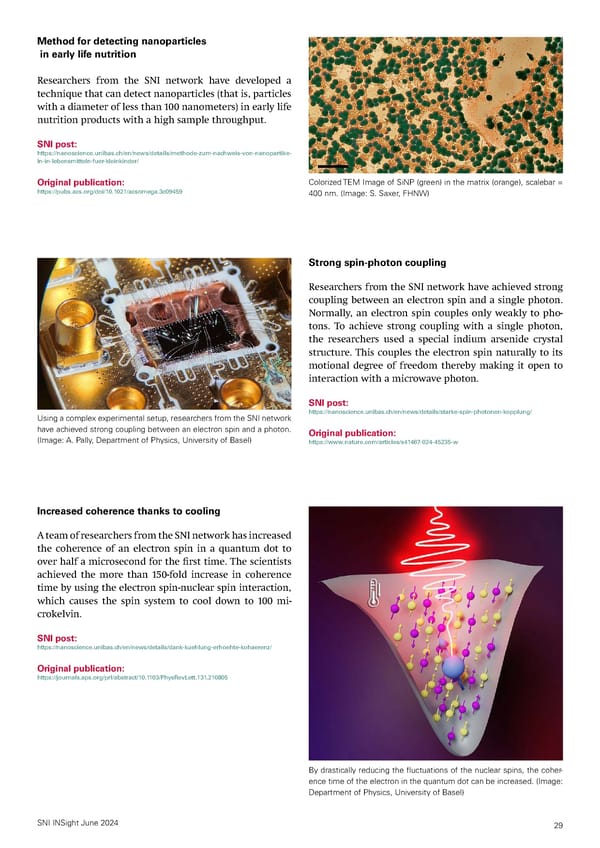Method for detecting nanoparticles in early life nutrition Researchers from the SNI network have developed a technique that can detect nanoparticles (that is, particles with a diameter of less than 100 nanometers) in early life nutrition products with a high sample throughput. SNI post: https://nanoscience.unibas.ch/en/news/details/methode-zum-nachweis-von-nanopartike- ln-in-lebensmitteln-fuer-kleinkinder/ Original publication: Colorized TEM Image of SiNP (green) in the matrix (orange), scalebar = https://pubs.acs.org/doi/10.1021/acsomega.3c09459 400 nm. (Image: S. Saxer, FHNW) Strong spin-photon coupling Researchers from the SNI network have achieved strong coupling between an electron spin and a single photon. Normally, an electron spin couples only weakly to pho- tons. To achieve strong coupling with a single photon, the researchers used a special indium arsenide crystal structure. This couples the electron spin naturally to its motional degree of freedom thereby making it open to interaction with a microwave photon. SNI post: Using a complex experimental setup, researchers from the SNI network https://nanoscience.unibas.ch/en/news/details/starke-spin-photonen-kopplung/ have achieved strong coupling between an electron spin and a photon. Original publication: (Image: A. Pally, Department of Physics, University of Basel) https://www.nature.com/articles/s41467-024-45235-w Increased coherence thanks to cooling A team of researchers from the SNI network has increased the coherence of an electron spin in a quantum dot to over half a microsecond for the 昀椀rst time. The scientists achieved the more than 150-fold increase in coherence time by using the electron spin-nuclear spin interaction, which causes the spin system to cool down to 100 mi- crokelvin. SNI post: https://nanoscience.unibas.ch/en/news/details/dank-kuehlung-erhoehte-kohaerenz/ Original publication: https://journals.aps.org/prl/abstract/10.1103/PhysRevLett.131.210805 By drastically reducing the 昀氀uctuations of the nuclear spins, the coher- ence time of the electron in the quantum dot can be increased. (Image: Department of Physics, University of Basel) SNI INSight June 2024 29
 SNI INSight June 2024 Page 28 Page 30
SNI INSight June 2024 Page 28 Page 30